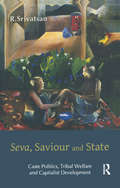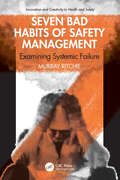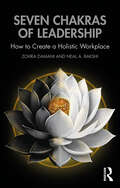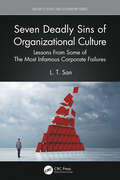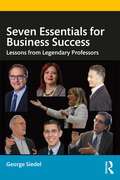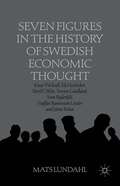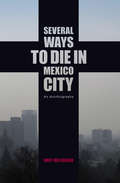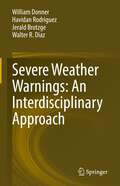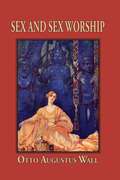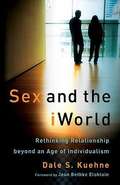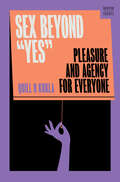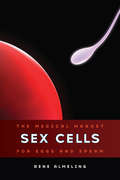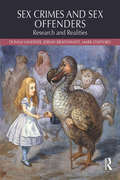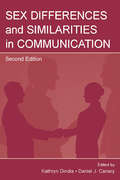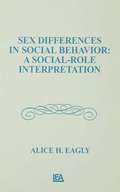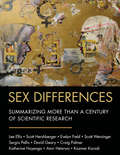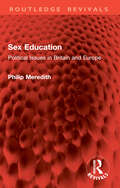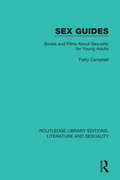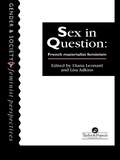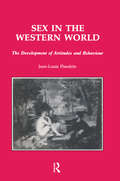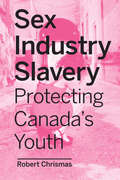- Table View
- List View
Settler Colonial City: Racism and Inequity in Postwar Minneapolis
by David HugillRevealing the enduring link between settler colonization and the making of modern Minneapolis Colonial relations are often excluded from discussions of urban politics and are viewed instead as part of a regrettable past. In Settler Colonial City, David Hugill confronts this culture of organized forgetting by arguing that Minnesota&’s largest city is enduringly bound up with the power dynamics of settler-colonial politics. Examining several distinct Minneapolis sites, Settler Colonial City tracks how settler-colonial relations were articulated alongside substantial growth in the Twin Cities Indigenous community during the second half of the twentieth century—creating new geographies of racialized advantage. Studying the Phillips neighborhood of Minneapolis in the decades that followed the Second World War, Settler Colonial City demonstrates how colonial practices and mentalities shaped processes of urban reorganization, animated non-Indigenous &“advocacy research,&” informed a culture of racialized policing, and intertwined with a broader culture of American imperialism. It reveals how the actions, assumptions, and practices of non-Indigenous people in Minneapolis produced and enforced a racialized economy of power that directly contradicts the city&’s &“progressive&” reputation. Ultimately, Settler Colonial City argues that the hierarchical and racist political dynamics that characterized the city&’s prosperous beginnings are not exclusive to a bygone era but rather are central to a recalibrated settler-colonial politics that continues to shape contemporary cities across the United States.
Seva, Saviour and State: Caste Politics, Tribal Welfare and Capitalist Development
by R. SrivatsanThis book provides a unique understanding of the concept and practice of seva (service) in modern India. It examines social reform, key ameliorative programmes, seva organisations, nationalist politics and colonial anthropology to show the critical linkages between caste politics, tribal welfare and capitalist development. Drawing upon archival research and field interviews, the author establishes a critical dialogue with both historiography and ethnography. Further, he explores how the works of Gandhi, Nehru, Ambedkar, Gokhale, and others functioned in the political discourses and practices of their time. This lucid and comprehensive study will interest scholars and researchers in political theory, modern Indian history, sociology and social anthropology, Dalit and tribal studies, and cultural studies.
Seven Bad Habits of Safety Management: Examining Systemic Failure (Innovation and Creativity in Health and Safety)
by Murray RitchieOccupational Health and Safety has been a growth industry for several decades and has moved beyond the realm of the human resource department and workers’ compensation claims. However, the methodologies utilized and taught within the profession have changed little since the 1930s. The industry continues to operate in a "comfort zone" and, as such, has reached an improvement plateau. This important book examines seven of these antiquated comfort zones from their conceptions to implementation and explores why they fail to achieve the desired results and what alternatives are available. Seven Bad Habits of Safety Management: Examining Systemic Failure delivers seven focused chapters outlining the comfort zones they create and their impacts on new initiatives. Each critically analyses common safety practices exploring where they came from, why they fail, and a few alternatives being discussed around the world. Case studies underpin learning that will allow the reader to revisit and revise their current programs and campaigns to realise a better return on their safety investment. The book will allow the reader to better understand the root causes of systems failures faced daily in the management of health and safety and how to confront them. This readable and exciting text from an author with over 40 years of experience in occupational health and safety will appeal to students, researchers and professionals of process safety, occupational safety, safety engineering, human resources and business management.
Seven Chakras of Leadership: How to Create a Holistic Workplace
by Zohra Damani Neal A. BakshiSeven Chakras of Leadership is a transformative guide for leaders seeking to align their inner energy with their professional impact. It connects ancient wisdom with modern leadership science, offering a powerful framework for navigating the complexities of today’s workplace while staying grounded in authenticity and purpose.At the book’s core is the concept of The Journey—a practice inspired by Shamanism, inviting leaders to explore their inner world and align their energy centers, or chakras, to unlock their fullest leadership potential. The authors provide actionable tools rooted in ancient traditions—such as meditation, breathwork, energy healing, and chakra alignment—tailored to the demands of modern leadership. Using the chakra system as a framework, the book maps each chakra (root, sacral, solar plexus, heart, throat, third eye, and crown) to critical aspects of leadership development. By linking chakra principles to evidence-based practices such as emotional intelligence, mindfulness, and transformational leadership, leaders will gain practical insights into how balancing their energy centers can enhance decision-making, foster resilience, and improve team dynamics. Addressing both the empowering and shadow aspects of these energy centers, the book equips leaders with practical tools, reflective exercises, and action steps to navigate challenges, build self-awareness, and drive meaningful transformation in their organizations.With templates for energy management and chakra assessment, whether you’re a corporate executive, manager, or entrepreneur, this book equips you with practical strategies to balance your inner compass and develop conscious, compassionate leadership.
Seven Deadly Sins of Organizational Culture: Lessons From Some of The Most Infamous Corporate Failures (Security, Audit and Leadership Series)
by L. T. SanThis book is about the primary symptoms present in a dysfunctional culture that could have devastating outcomes for any organization. The book outlines each of the seven sins in each chapter. Each of the first seven chapters (Chapters 1–7) starts with a famous quote related to each of the sins and then immediately recounts stories ripped from the headlines describing well-known corporate failures but with a personal touch from former employees who experienced those stories from inside the company. (The sources for these stories are all cited in their Bibliographies.) The seven sins of organizational culture are linked with seven different corporate scandals that serve as a "lesson learned" as well as seven stories of organizations that have been successful with each respective organizational attribute as follows: Flawed Mission and Misaligned Values uses WorldCom as the lesson learned and Patagonia as the success case. Flawed Incentives uses Wells Fargo as the lesson learned and Bridgeport Financial as the success case. Lack of Accountability uses HSBC as the lesson learned and McDonald’s as the success case. Ineffective Talent Management uses Enron as the lesson learned and Southwest Airlines as the success case. Lack of Transparency uses Theranos as the lesson learned and Zappos as the success case. Ineffective Risk Management uses the 2008 mortgage industry collapse as the lesson learned and Michael Burry as the success case. Ineffective Leadership summarizes all of the foregoing sins as failures of Leadership. In each chapter and for each organizational sin, the author offers seven attributes of a healthy culture to counter the cultural dysfunction. The seven healthy attributes for each of the seven sins are all original content. In Chapter 8, the author offers an approach for assessing an organization’s culture by providing seven ways to measure the different drivers of organizational culture. The ideas for how to measure corporate culture is original content, with some references to existing frameworks (all cited in the Bibliography.) Finally, in Chapter 9, the author offers a step-by-step outline for transforming the culture. The chapter starts with a story about how Korean Air suffered multiple crashes due to their corporate culture but were able to successfully transform their culture. (The source for the Korean Air story is cited in the Bibliography.) There are seven appendices, most of which are by the author except for the maturity of risk management, which references an OECD (government entity) risk management maturity framework.
Seven Essentials for Business Success: Lessons from Legendary Professors
by George SiedelSuccessful leaders are great teachers, and successful teachers serve as models of leadership. This book enables both leaders and teachers to understand and use the best practices developed by award-winning professors, each of whom teaches one of the seven areas that are essential for business success. These professors candidly discuss their successes and failures in the classroom, the mentors who inspired them, how they developed their teaching methods, and their rigorous preparation for class. Through descriptions of the professors in action, readers will gain an insider’s perspective on their teaching skills, and witness how they teach the seven essentials for success in a variety of settings—MBA, Executive MBA, and executive education courses. The chapters also describe the daily lives (professional and personal) of the professors, and the impact they have beyond the classroom in improving organizations and society. If you are a leader or teacher—or if you are interested in the content of a business school education—this book provides an insider’s perspective on the best practices used by legendary professors when teaching the seven essentials that represent the core body of knowledge for business success.
Seven Figures in the History of Swedish Economic Thought
by Mats LundahlWho are the greatest economic thinkers of Sweden? Seventeen essays on seven Swedish economists aim to answer this question, exploring the contributions of Knut Wicksell, Eli Heckscher, Bertil Ohlin, Torsten G#65533;rdlund, Sven Rydenfelt, Staffan Burenstam Linder and Jaime Behar. Swedish academic economists have by and large withdrawn from the public debate but this book celebrates Swedish Economic Thought from Knut Wicksell to the present.
Seven Radical Ideas for the Future of Higher Education: An Australian Perspective (SpringerBriefs in Education)
by Claire Macken Julie Hare Kay SouterThis book focuses on the disruption of the tertiary higher education system as a result of societal changes occasioned by the Fourth Industrial Revolution and hastened by COVID-19. It takes the view that higher education is on an inevitable trajectory of disruption as a result of globalisation, technological disruption, and disaggregation of the formal education sector but that it must not lose sight of its central role in equipping current and future students for the new economy. The book takes a student-centric - and big-picture approach - examining some of the biggest challenges facing massified higher education systems. The authors consider ways to achieve modern, responsive and efficient higher education systems globally that are economically sound for governments and affordable for individuals.
Several Ways to Die in Mexico City
by Kurt HollanderIn the '80s, when author/photographer Kurt Hollander lived in New York and published The Portable Lower East, life there was particularly rough, and cops often drove yellow cabs as a method to surprise and roust its residents. Before the decade ended, Hollander moved to the equally rough climes of Mexico City, making his living writing and photographing for The Guardian, The New York Times, Los Angeles Times, and many other publications. Hollander's visual and textual extravaganza, Several Ways to Die in Mexico City, provides a perspective of this extraordinary city that could only have been caught by an observant outsider who lived in all its nooks and crannies for over two decades. Crammed with caustic but fair observations of the city's history, food, cults, drugs, and buildings, Hollander proves that he can love a city and culture that also kills its inhabitants softly. While living high in Mexico City, Kurt Hollander edited poliester, the renowned bilingual art magazine about the Americas. He also directed the feature film Carambola, and wrote a successful series of children's books. Grove Press published the Portable Lower East Side anthology in 1994.
Severe Weather Warnings: An Interdisciplinary Approach
by William Donner Havidan Rodriguez Jerald Brotzge Walter R. DiazThis book offers a comprehensive description and analysis of natural hazard warnings, drawing on perspectives from the social sciences, physical sciences, and interdisciplinary fields such as disaster studies to articulate a distinction between traditional warnings and what might be called interdisciplinary warnings. Traditional warnings approach warning technology, design, and application from a principally scientific and technical perspective. Human factors, while considered, often are of secondary concern. Interdisciplinary warnings, on the other hand, maintain a critical emphasis on the technical merits of warning systems, but also ask, “Will psychological and community factors such as culture and structure shape how the system is used, and, if so, can this information be incorporated into system design preemptively to make it more effective?” Given the absence of systematic work on interdisciplinary warnings, a book-length monograph discussing and synthesizing knowledge from the various fields focused on warnings and warning response is of critical importance to both academics and practitioners. Broadly conceived, the book presents readers with an in-depth overview of warnings, interdisciplinary research, and interdisciplinary collaboration. The book holds appeal for a very broad audience: scholars; practitioners; and academic, vocational, and technical instructors both in University and non-University settings. It is of interest to academic scholars due to the interdisciplinary treatment of warnings as well as the general presentation of up-to-date scholarship on warning theory. Additionally, scholars interested in interdisciplinary work in general and those focusing on disaster warnings find within the volume a framework for developing collaborative research partnerships with those from other disciplines. As well, the book offers practitioners --emergency managers, mitigation specialists, planners, etc. --a more comprehensive perspective on emergency response in practice, allowing for better development and application of warning policy. Finally, the book appeals to instructors both inside and outside the academy. The authors envision the book useful to professors teaching both graduate and undergraduate-level courses in Sociology of Disaster, Emergency Management Planning, Homeland Security, Disaster Response, Disaster Mitigation, and Business Continuity and Crisis Management. A robust market also exists among professional organizations, perhaps most notably FEMA, which offers countless online and in-person training courses via the National Training Program, Emergency Management Institute (EMI), and other venues.
Sex And Sex Worship: (phallic Worship) A Scientific Treatise On Sex, Its Nature And Function, And Its Influence On Art, Science, Architecture, And Religion--with Special Reference To Sex Worship And Symbolism
by Otto Augustus WallSex is at the very heart of life, and this classic illustrated study of sex, its nature and function, and its influence on art, science, architecture and religion contains a wealth of information on sex beliefs, practices and worship in other cultures and periods of history stretching back to ancient times. Drawing on a wide range of sources including private collections of erotica, Wall shows how people in other times and places have dealt with the timeless themes of sexuality, male, female, love, passion, lust, desire and worship, dealing with sex as a private practice and also as public celebration. This edition first published in 2006. Routledge is an imprint of Taylor & Francis, an informa company.
Sex And The Iworld: Rethinking Relationship Beyond An Age Of Individualism
by Jean Bethke Elshtain Dale S. KuehneA pastor who is also a politics professor examines current issues pertaining to sexuality and society and asks, What kind of world are we creating? And is it the world we want to live in? With no finger-pointing, and a cordial openness to responses from all points of view, Dale Kuehne contrasts the "tWorld," in which traditional morality reigned and recent innovations would have been inconceivable, with the post-Enlightenment "iWorld," in which these innovations are promoted because the perceived immediate needs of the individual are paramount. Both, he finds, fall short of the "rWorld," the larger web of healthy and nourishing social relationships that provides the context for a biblical understanding of individual sexuality. This book will transform the conversation on sexuality among college students, campus ministers, church and ministry leaders, and all readers with an eye on culture and public policy. EXCERPT Even as the broader culture has deviated from the traditional understanding of sexual ethics and marriage, so have Christians. . . . Given the rapid shift in the sexual behavior of Christians, it should come as no surprise that when the church attempts to respond to the questions posed by the Sexual Revolution, it does so with mixed messages, a muted voice, and little impact. . . . The answer for the church is not to withdraw permanently from the public debate about sexual morality. Instead we need to step back, think deeply about what we believe, and rearticulate it in a better way. Most of all, we need to practice what we profess and in doing so, reengage the culture in a dialogue about the meaning of sexuality.
Sex Beyond "Yes": Pleasure and Agency for Everyone (A Norton Short)
by Quill R. KuklaPhilosopher Quill R Kukla questions traditional notions of consent in this honest, humanistic reimagining of what it means to have pleasurable, ethical, and respectful sex. Every discussion of sexual ethics revolves around consent, but is this notion enough to help us understand good sex? How does the dominance of consent help or prevent us from negotiating the complexities of intimacy and pleasure? Georgetown professor Quill R Kukla argues that the idea that consent is the gatekeeper between the realms of good and bad sex does not give us the tools we need to navigate pleasure and intimacy. They claim that traditional discussions of consent make no room for the reality that we can have good sex even though we may get drunk or high, or become forgetful with age, or be limited by social pressures and power relationships Kukla explores the ambiguous realms in which sexual agency requires much more than the ability to just say "yes" or "no" to sex. They confront moments of discomfort: How does consent work for people with dementia, a condition that is also associated with increased libido? Or in sex work, where sexual contracts challenge our traditional conceptions of ethical sex? How can we express our agency when exploring new kinks, where our hesitations and ambivalence are part of the thrill? Or even in everyday sex—where partners inevitably differ in enthusiasm, power dynamics, and experience? Combining rigorous research and universal lessons that apply both in and out of the bedroom, Kukla approaches the concepts of sexual agency, sexual pleasure, and consent with unapologetic verve. Challenging readers to think beyond reductive concepts of consent, gender, and freedom, Sex Beyond "Yes" reframes the communication and social support we need to establish sexual relationships founded on genuine respect, open discourse, and unhindered joy.
Sex Cells: The Medical Market for Eggs and Sperm
by Rene AlmelingUnimaginable until the twentieth century, the clinical practice of transferring eggs and sperm from body to body is now the basis of a bustling market. In Sex Cells, Rene Almeling provides an inside look at how egg agencies and sperm banks do business. Although both men and women are usually drawn to donation for financial reasons, Almeling finds that clinics encourage sperm donors to think of the payments as remuneration for an easy "job." Women receive more money but are urged to regard egg donation in feminine terms, as the ultimate "gift" from one woman to another. Sex Cells shows how the gendered framing of paid donation, as either a job or a gift, not only influences the structure of the market, but also profoundly affects the individuals whose genetic material is being purchased.
Sex Crimes and Sex Offenders: Research and Realities
by Donna Vandiver Jeremy Braithwaite Mark Stafford<p>Sex Crimes and Sex Offenders: Research and Realities provides an overview of social scientific theory and research on sex crimes and sex offenders. Most other books on the market are focused on a single issue—such as treatment, rape, pedophilia, theory, etc. This book is unique in that it covers the most current theory and research along with individual cases of sex crimes (e.g., Kobe Bryant, Jerry Sandusky, and other case studies), effectively linking theory and research with the realities of sex crimes and sex offenders as well as their victims. <p>Vandiver, Braithwaite, and Stafford are careful to dispel myths and to focus on the heterogeneity of sex crimes and sex offenders, and not on any one issue or population or theory. Instead, they weave a framework using a full range of theoretical concepts and research data to integrate their discussions of crimes, offenders, victims, treatments, and policy implications. The result is a valuable resource for students and early-stage researchers investigating sex crimes or offenders.</p>
Sex Differences and Similarities in Communication (Routledge Communication Series)
by Daniel J. Canary Kathryn DindiaSex Differences and Similarities in Communication offers a thorough exploration of sex differences in how men and women communicate, set within the context of sex similarities, offering a balanced examination of the topic. The contents of this distinctive volume frame the conversation regarding the extent to which sex differences are found in social behavior, and emphasize different theoretical perspectives on the topic. Chapter contributors examine how sex differences and similarities can be seen in various verbal and nonverbal communicative behaviors across contexts, and focus on communication behavior in romantic relationships. The work included here represents recent research on the topic across various disciplines, including communication, social psychology, sociology, linguistics, and organizational behavior, by scholars well-known for their work in this area. In this second edition, some chapters present new perspectives on sex/gender and communication; others present substantially revised versions of earlier chapters. All chapters have a stronger theoretical orientation and are based on a wider range of empirical data than those in the first edition. Readers in communication, social psychology, relationships, and related fields will find much of interest in this second edition. The volume will serve as a text for students in advanced coursework as well as a reference for practitioners interested in research-based conclusions regarding sex differences in communicative behavior.
Sex Differences in Social Behavior: A Social-role interpretation (Distinguished Lecture Series #Vol. 1985)
by Alice H. EaglyIn presenting an innovative theory of sex differences in the social context, this volume applies social-role theory and meta-analytic techniques to research in aggression, social influence, helping, nonverbal, and group behavior. Eagly's findings show that gender stereotypic behavior results from different male and female role expectations, and that the disparity between these gender stereotypes and actual sex differences is not as great as is often believed.
Sex Differences: Summarizing More than a Century of Scientific Research
by Sergio Pellis David Geary Lee Ellis Amir Hetsroni Scott Hershberger Evelyn Field Scott Wersinger Craig Palmer Katherine Hoyenga Kazmer KaradiThis volume is the first to aim at summarizing all of the scientific literature published so far regarding male-female differences and similarities, not only in behavior, but also in basic biology, physiology, health, perceptions, emotions, and attitudes. Results from over 18,000 studies have been condensed into more than 1,900 tables, with each table pertaining to a specific possible sex difference. Even research pertaining to how men and women are perceived (stereotyped) as being different is covered. Throughout this book's eleven years in preparation, no exclusions were made in terms of subject areas, cultures, time periods, or even species. The book is accompanied by downloadable resources containing all 18,000+ references cited in the book.Sex Differences is a monumental resource for any researcher, student, or professional who requires an assessment of the weight of evidence that currently exists regarding any sex difference of interest. It is also suitable as a text in graduate courses pertaining to gender or human sexuality.
Sex Dolls at Sea: Imagined Histories of Sexual Technologies (Media Origins)
by Bo RubergInvestigating and reimagining the origin story of the sex doll through the tale of the sailor&’s dames de voyage.The sex doll and its high-tech counterpart the sex robot have gone mainstream, as both the object of consumer desire and the subject of academic study. But sex dolls, and sexual technology in general, are nothing new. Sex dolls have been around for centuries. In Sex Dolls at Sea, Bo Ruberg explores the origin story of the sex doll, investigating its cultural implications and considering who has been marginalized and who has been privileged in the narrative. Ruberg examines the generally accepted story that the first sex dolls were dames de voyage, rudimentary figures made of cloth and leather scraps by European sailors on long, lonely ocean voyages in centuries past. In search of supporting evidence for the lonesome sailor sex doll theory, Ruberg uncovers the real history of the sex doll. The earliest commercial sex dolls were not the dames de voyage but the femmes en caoutchouc: &“women&” made of inflatable vulcanized rubber, beginning in the late nineteenth century. Interrogating the sailor sex doll origin story, Ruberg finds beneath the surface a web of issues relating to gender, sexuality, race, and colonialism. What has been lost in the history of the sex doll and other sex tech, Ruberg tells us, are the stories of the sex workers, women, queer people, and people of color whose lives have been bound up with these technologies.
Sex Education: Political Issues in Britain and Europe (Routledge Revivals)
by Philip MeredithIn the book Sex Education (first published in 1989), Philip Meredith focuses upon the British situation to investigate the political management of school sex education. The author presents new insights into the problems of state provision of an aspect of education which many feel should be the exclusive domain of parents. He explores the hidden political dynamics which dictate and influence the moral debate over the theory and practice of sex education and argues for a more rational involvement of government in resolving the problems of practice.The book includes comparative details of political management and curriculum design, drawn mainly from Sweden, Denmark, the Federal Republic of Germany, Poland, and Belgium, which clarifies or provides alternatives to the British handling of the subject. Basing his recommendations on these examples of more constructive management of sex education, Philip Meredith challenges the government to take a more positive role by delegating policy decision-making in this area to a nationally representative, independent, and authoritative body of experts, whose deliberations the government would defend against minority moral interests who wield a disproportionate power.
Sex For Sale: Prostitution, Pornography, and Erotic Dancing
by Ronald WeitzerSince the publication of the second edition in 2010, the field of sex work studies has expanded. This fully updated edition of Sex for Sale: Prostitution, Pornography, and Erotic Dancing presents an innovative, in-depth, and nuanced analysis of sex work, its risks, and benefits, and pays attention to newer and everchanging types of sex work and its actors, as well as public policies and laws that govern its trade. Now in its third edition, this volume includes updated research on traditional forms of sexual labor and incorporates original, empirically grounded research on newer or less researched phenomena. New chapters explore the use of technology among street sellers, blurring the line between street and online solicitation, in addition to chapters on historical prostitution, transgender workers, illicit massage parlors, male strippers, commercial webcamming, alternative policies and legal systems, and the sex workers' rights movement. The combination of cutting-edge and comprehensive analyses and carefully constructed methodologies in Sex for Sale makes it an excellent source of information for scholars and university students in gender studies, sociology, and criminology.
Sex Guides: Books and Films about Sexuality for Young Adults (Routledge Library Editions: Literature and Sexuality)
by Patty CampbellThe history of the sex guide for adolescents documents the quite unconscious movement of Western culture’s ideas about sex and youth, revealing the heritage of our own sexual beliefs and codes of behaviour. The first section of this book, first published in 1986, traces the development of the sex guide, examining 400 books from 1892 to the 1980s. The second section comprises a detailed analysis of the patterns, content and usefulness of all the contemporary manifestations of the genre. The history of the teen sex manual is a fascinating revelation of American attitudes towards adolescent sexuality.
Sex In Question: French Feminism
by Diana Leonard Lisa AdkinsFirst published in 1996. Routledge is an imprint of Taylor & Francis, an informa company.
Sex In The Western World: The Development Of Attitudes And Behaviour
by Jean-Louis Flandrin S. CollinsFirst Published in 1991. In this book the author looks at the history of sexuality, discussing topics of love from the 15th century onwards, sexual morality and marriage, ancient and modern adages conernong procreation as a part of society and the sex lives of single people.
Sex Industry Slavery in Present-Day Canada
by Robert ChrismasSexual exploitation and human sex trafficking is a multi-billion-dollar international industry that preys on youth. Written by veteran police officer Robert Chrismas, Sex Industry Slavery is an impactful read for anyone who wants to know more about this serious Canadian problem. Many young women are coerced into oppressive relationships in the sex industry, often starting in childhood. There are numerous barriers and challenges for children who are vulnerable to exploitation as well as for survivors striving to leave the sex industry; however, there are also many opportunities to help them. Based on Chrismas’s award-winning research in Manitoba, this book includes gut-wrenching stories from survivors, social workers, police officers, lawmakers, and activists. Representing decades of collective knowledge, Sex Industry Slavery presents first-hand perspectives on the problem as well as proposes practical solutions.

